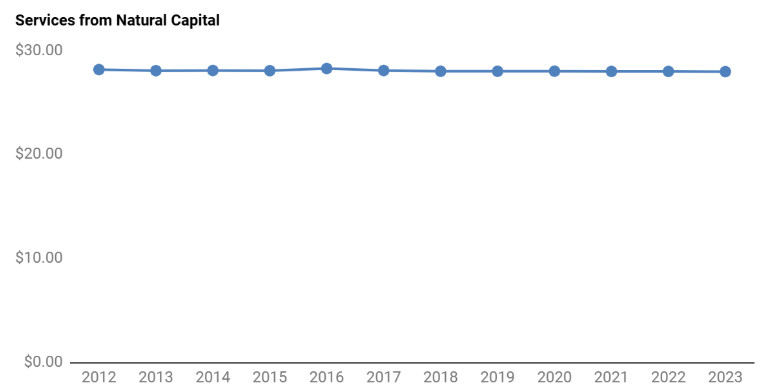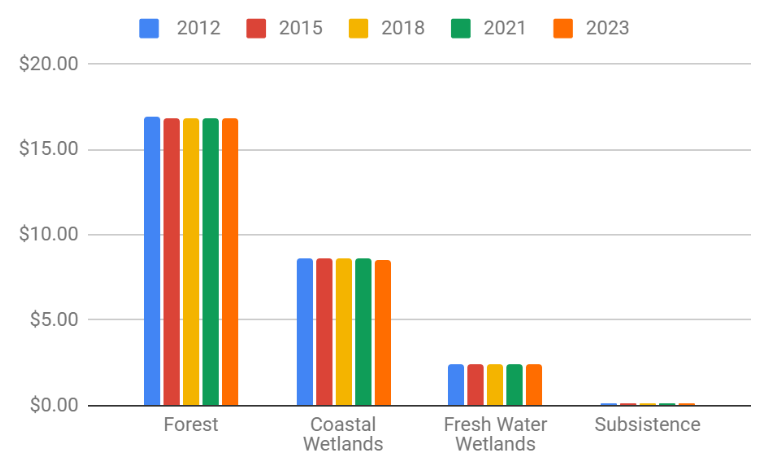Services from Natural Capital
(billions 2012 $)

Services from Natural Capital

Ecosystem Services (Billion $)
What are we measuring?
New to GPI 2.0, we include the contributions that the environment makes to the wellbeing of the Maryland public. These benefits have been termed “ecosystem services”. We consider benefits from forests, wetlands, and the Chesapeake Bay, such as provision of clean water and air, avoidance or erosion, habitat value for fish and wildlife and the value of the fish and game harvest from the wild.
Trends 2012-2023
Natural capital services slightly declined, by ~0.5% from 2012 to 2023. This reflects small declines in forest and wetland area and less participation in hunting and fishing for subsistence, which fell by ~25%.
Calculation
The ecosystem service values considered here are calculated through the
Accounting for Maryland’s Ecosystem Services initiative at Maryland DNR. Inputs are the acreage of forests (calculated using satellite imagery from
University of Maryland Global Forest Change), freshwater wetland, coastal wetlands (as reported by Maryland Department of the Environment), and the Chesapeake Bay. The acreage is then multiplied by the average contribution that an acre of that land type makes in the form of ecosystem services, which include carbon sequestration, flood protection, drinking water, timber, erosion prevention, nutrient uptake, air pollution reduction, wildlife habitat, recreation and food. The values used are $6,900 per acre per year for forests, $7,100 per acre per year for freshwater wetlands, $34,000 per acre for coastal wetlands, and $13 per acre per year for the Chesapeake Bay. The ecosystem services considered here do not include benefits that are already incorporated in the economy, such as commercial harvest of fish and timber or recreation.